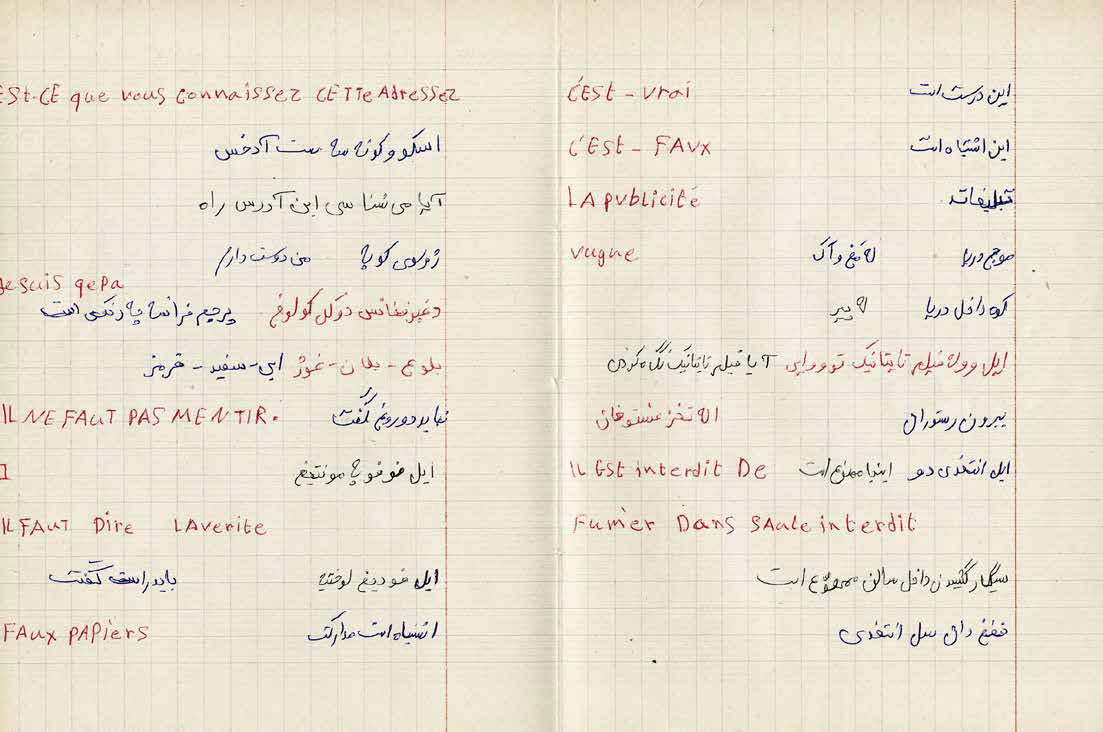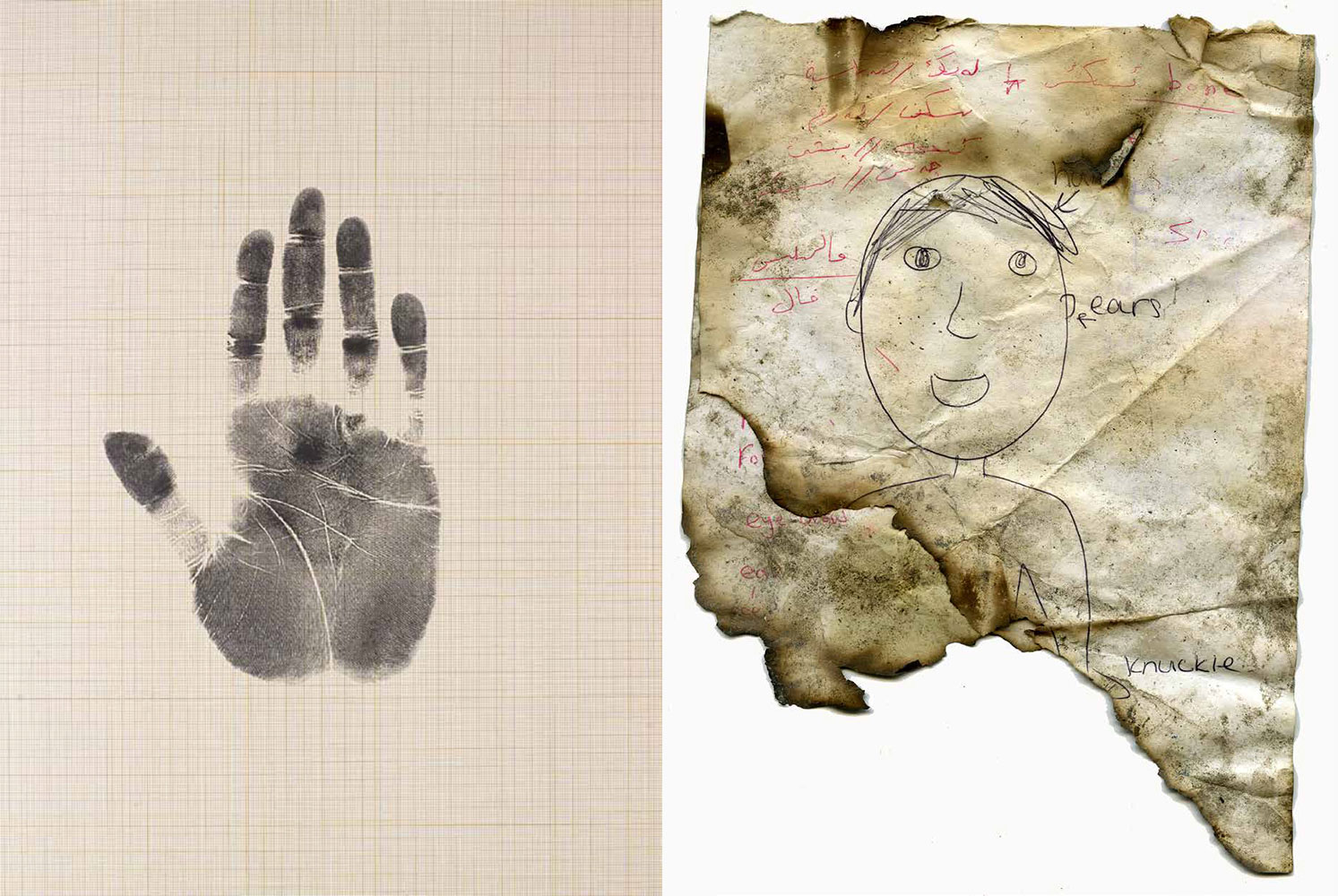PRESENTATION:Mathieu Pernot-Atlas In Motion
 Mathieu Pernot’s work is part of the documentary photography approach, yet diverts from its protocols in order to explore alternative forms and construct multi-voiced narratives. The artist proceeds by series, which form many points of view on the major political and social questions that agitate society in its relationship to its margins and periphery. From 2019 onwards, he is making a series of trips to the Middle East and the island of Lesbos in order to take on a new way of working, far from the usual geography of his previous output.
Mathieu Pernot’s work is part of the documentary photography approach, yet diverts from its protocols in order to explore alternative forms and construct multi-voiced narratives. The artist proceeds by series, which form many points of view on the major political and social questions that agitate society in its relationship to its margins and periphery. From 2019 onwards, he is making a series of trips to the Middle East and the island of Lesbos in order to take on a new way of working, far from the usual geography of his previous output.
By Efi MIchalarou
Photo: Mucem Archive
In 2010, Mathieu Pernot made his first images of migrants with photographs of refugees sleeping outdoors taken in the Calais Jungle and on the streets of Paris. Thereafter, he would favour a more open, protean approach by collecting images and writings produced by the exiled. He also co-produced shared representations with them, which were produced using two pairs of hands over a number of years and meetings. “Atlas in Motion” presents the work Mathieu Pernot has been doing for over ten years with migrants and proposes a new perspective in the way they are represented. Astronomy, botany, anatomy, cartography, the history of writing and the question of home are all brought to bear in this atlas, thus establishing a common knowledge of all of humanity—a common knowledge that is embodied here by individuals with singular destinies and whom the author met. The planets are in perpetual motion, animal species migrate freely, and plants swarm and invade landscapes, while a part of humanity is constrained and prevented in their desire to move. Refusing to be assigned to a territory where it is no longer possible to live, some invent new ways of getting around to move forward. The path is long and difficult, and many will not see the end of the journey. What can we imagine of the boats swallowed up by the waters of the Mediterranean? Can a forest keep the memory of those who have crossed it? What can the sky tell us about the history of those who look at it? How can one inhabit one’s body when one has to leave the place where it was itself constructed? In response, Mathieu Pernot proposes a new form of narrative, where the shared story is told with several voices. Combining photographs, videos, handwritten materials, maps and found objects, the atlas reverses the point of view on migrants. Almost always anonymous and anxiety-provoking subjects of media discourse, these individuals are named here and inscribed in the long history of the knowledge of which they are its depositories.
“Atlas in Motion” proposes a new form of narrative, where shared history is told in several voices. Combining 111 photographs, 20 videos, 177 handwritten documents, maps and found objects, the atlas reverses the point of view on migrants. Anonymous and anxiety-provoking subjects of media discourse, these individuals are named here and inscribed in the long history of the knowledge of which they are its depositories. The exhibition is divided into eleven themes crossing the times and lands of exile, to meet those who have the strength of hope. Under the stars: Around the Syrian astronomer Muhammad Ali Sammuneh. This wall presents a reconstitution of the celestial vault at the precise dates and places where Muhammad Ali Sammuneh found himself when he fled Aleppo for Paris. These images are accompanied by a set of ancient astronomical plates acquired by Mathieu Pernot and translated into Arabic by Muhammad Ali Sammuneh. In Nature: Two series of photographs show the Calais Jungle after its closure, and the century-old olive trees in the Mória Jungle in Lesbos, used as firewood by refugees. They are accompanied by a series of botanical plates and repre-sentations of phylogenetic trees made by Marwan Cheikh Albassatneh, a specialist in the biodiversity of Mediterranean species. Round the fire: This gallery presents a series of images taken at the Mória camp on the island of Lesbos, which serves as an administrative registration centre and waiting area for tens of thousands of refugees from countries at war: Afghanistan, Congo, Somalia, Syria, etc. At the beginning of 2020, it was experiencing unprecedented overcrowding: designed for 2,000 people, it was occupied by over 20,000 refugees. As they do not have access to the camp’s infrastructure, the vast majority of them are forced to live in tents in the olive grove, renamed the Mória Jungle. Migrants live there in the greatest destitution, waiting for their asylum application to be processed, which can take over two years. In the following months, the Covid-19 epidemic hit the camp hard. In September, the camp was completely destroyed by a fire started by the refugees in revolt against their fate. Debris of life: A series of photographs shows the Mória camp after the fire that destroyed it, as well as documents found in the Calais Jungle after the migrants had left the site. Having to leave: Mathieu Pernot traced their migration routes with refugees on sheets of graph paper. These different routes are reassembled by the artist in an in-situ installation.
Going to sea: A series of four photographs shows abandoned lifebuoys and lifejackets on the island of Lesbos. They are followed by seven old nautical maps, on which the location of shipwrecks, their dates, and the number of victims are identified. These maps sometimes carry migrants’ stories, such as that of a child born on the ship SOS Méditerranée, and named “Miracle”. Finally, four photographs show the departure and arrival points of boats: the sea as migrants see it when they jump into the water. Testing one’s body: During the journey, the body is put to the test. In this chapter, Mathieu Pernot brings together different representations in collaboration with exiled people. Najah Albukai, who fled Syria, draws the scenes of torture he underwent in the regime’s prisons. Handprints by Mathieu Pernot evoke the control and identification of migrants arrested on arrival.A set of anatomy plates is captioned in Dari by the doctor Maryam Azimi, who left Afghanistan in 2010. On the same wall, Mathieu Pernot’s photographs of bodies wrapped in sleeping bags are linked to Mohamed Abakar’s images of wrapped statues. This section concludes with nine stamps of wrestlers printed on notebooks and commented on by Evrik Nikoghosyan, who joined the French wrestling team after leaving Armenia and becoming a French citizen. Having a roof: Three series of photographs question the notion of home for individual migrants. Leaving their destroyed cities (here, Homs and Aleppo), migrants take refuge in overcrowded camps (in Lesbos, Calais, Paris). Arriving somewhere: This section presents framed pages from school notebooks with a number of migrant stories written in different languages (Dari, Tigrinya, Chechen, Georgian, Arabic). These stories are translated into French in the exhibition. Telling one’s story: The migrant stories continue, with the story of Afghan Mansour Souleiman Khel. Portraits: In the centre of the exhibition room, four picture rails present photographic portraits of refugees. These photographed individuals appear to be looking at the bodies of images from “Atlas in Motion” presented on the other walls of the exhibition space. Archives table: An archive table displays a set of school notebooks found in the former camps of the Calais Jungle. The Black box: Screening of some twenty videos sent by refugees to Mathieu Pernot. An immersion into the daily life of migrants, from sea crossing to life in the camps. From Mosul to Aleppo, from Lesbos to Calais via Paris, the exhibition crosses the times and lands of exile, going to meet those who have the strength of hope. It sets images in motion and proposes to create a space where the fragile history of migrants can be represented. It tells us that this story is part of a common history that we must write together.
Photo: Mathieu Pernot, Mólyvos, Lesbos (Greece), 2020, © Mathieu Pernot
Info: Musée des civilisations de l’Europe et de la Méditerranée (Mucem), 7 promenade Robert Laffont (esplanade du J4), Marseille, France, Duration: 8/7-9/10/2022, Days & Hours: Mon & Wed-Sun 10:00-20:00 (9/7-29/8) or 10:00-19:00 (31/8-9/10), www.mucem.org/




Right: Mathieu Pernot, Olive trees, Mória camp, Lesbos (Greece), 2020, © Mathieu Pernot


Right: The Angel of History, 2016, © Mathieu Pernot


